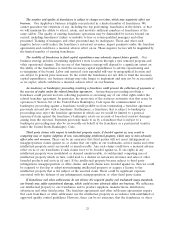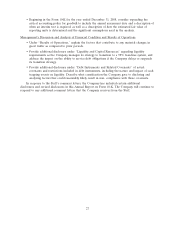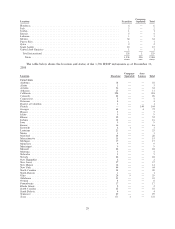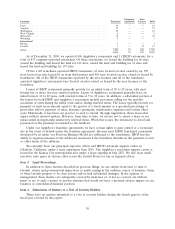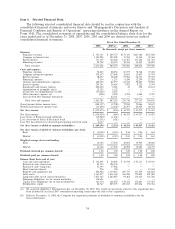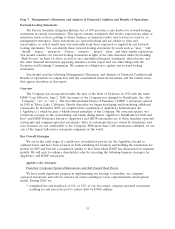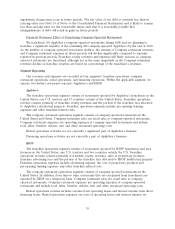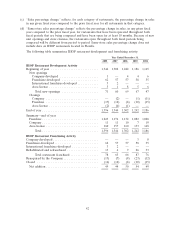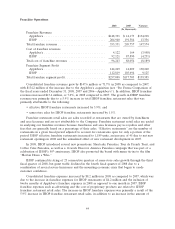IHOP 2008 Annual Report Download - page 49
Download and view the complete annual report
Please find page 49 of the 2008 IHOP annual report below. You can navigate through the pages in the report by either clicking on the pages listed below, or by using the keyword search tool below to find specific information within the annual report.
Item 7. Management’s Discussion and Analysis of Financial Condition and Results of Operations.
Forward-Looking Statements
The Private Securities Litigation Reform Act of 1995 provides a safe harbor for forward-looking
statements in certain circumstances. This report contains statements that involve expectations, plans or
intentions (such as those relating to future business or financial results, new features or services, or
management strategies). These statements are forward-looking and are subject to risks and
uncertainties, so actual results may vary materially from those expressed or implied by any forward-
looking statements. You can identify these forward-looking statements by words such as ‘‘may,’’ ‘‘will,’’
‘‘should,’’ ‘‘expect,’’ ‘‘anticipate,’’ ‘‘believe,’’ ‘‘estimate,’’ ‘‘intend,’’ ‘‘plan,’’ and other similar expressions.
You should consider our forward-looking statements in light of the risks discussed under the heading
‘‘Risk Factors’’ in Item 1A above as well as our consolidated financial statements, related notes, and
the other financial information appearing elsewhere in this report and our other filings with the
Securities and Exchange Commission. We assume no obligation to update any forward-looking
statements.
You should read the following Management’s Discussion and Analysis of Financial Condition and
Results of Operations in conjunction with the consolidated financial statements and the related notes
that appear elsewhere in this report.
Overview
The Company was incorporated under the laws of the State of Delaware in 1976 with the name
IHOP Corp. Effective June 2, 2008, the name of the Company was changed to DineEquity, Inc. (the
‘‘Company,’’ ‘‘we’’ or ‘‘our’’) . The first International House of Pancakes (‘‘IHOP’’) restaurant opened
in 1958 in Toluca Lake, California. Shortly thereafter we began developing and franchising additional
restaurants. In November 2007, we completed the acquisition of Applebee’s International, Inc.
(‘‘Applebee’s’’) which became a wholly-owned subsidiary of the Company. We own and operate two
restaurant concepts in the casual dining and family dining niches: Applebee’s Neighborhood Grill and
Bar and IHOP. Reference herein to Applebee’s and IHOP restaurants are to those franchise-operated
restaurants and company-operated restaurants. Sales of restaurants that are owned by franchisees and
area licensees are not attributable to the Company. With more than 3,400 restaurants combined, we are
one of the largest full-service restaurant companies in the world.
Key Overall Strategies
We are in the early stages of a multi-year revitalization process for the Applebee’s brand as
outlined below and have been focused on both stabilizing the business and building the foundation for
growth in 2009 and beyond, a foundation similar to that from which IHOP has demonstrated consistent
growth. We will seek to enhance shareholder value by executing the following business strategies for
Applebee’s and IHOP restaurants.
Applebee’s Key Strategies
Franchise Company-Operated Restaurants and Sell Owned Real Estate
We have made significant progress in implementing our strategy to franchise our company-
operated restaurants and sell our owned real estate resulting in a less capital-intensive development
model. During 2008, we:
• completed the sale-leaseback of 181, or 91% of our fee-owned, company-operated restaurants
resulting in cash proceeds used to reduce debt by $304.8 million;
35


